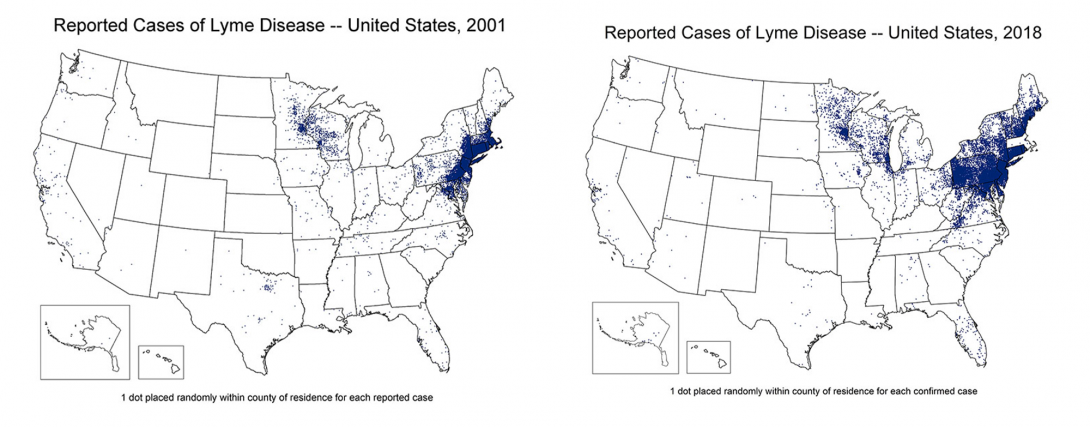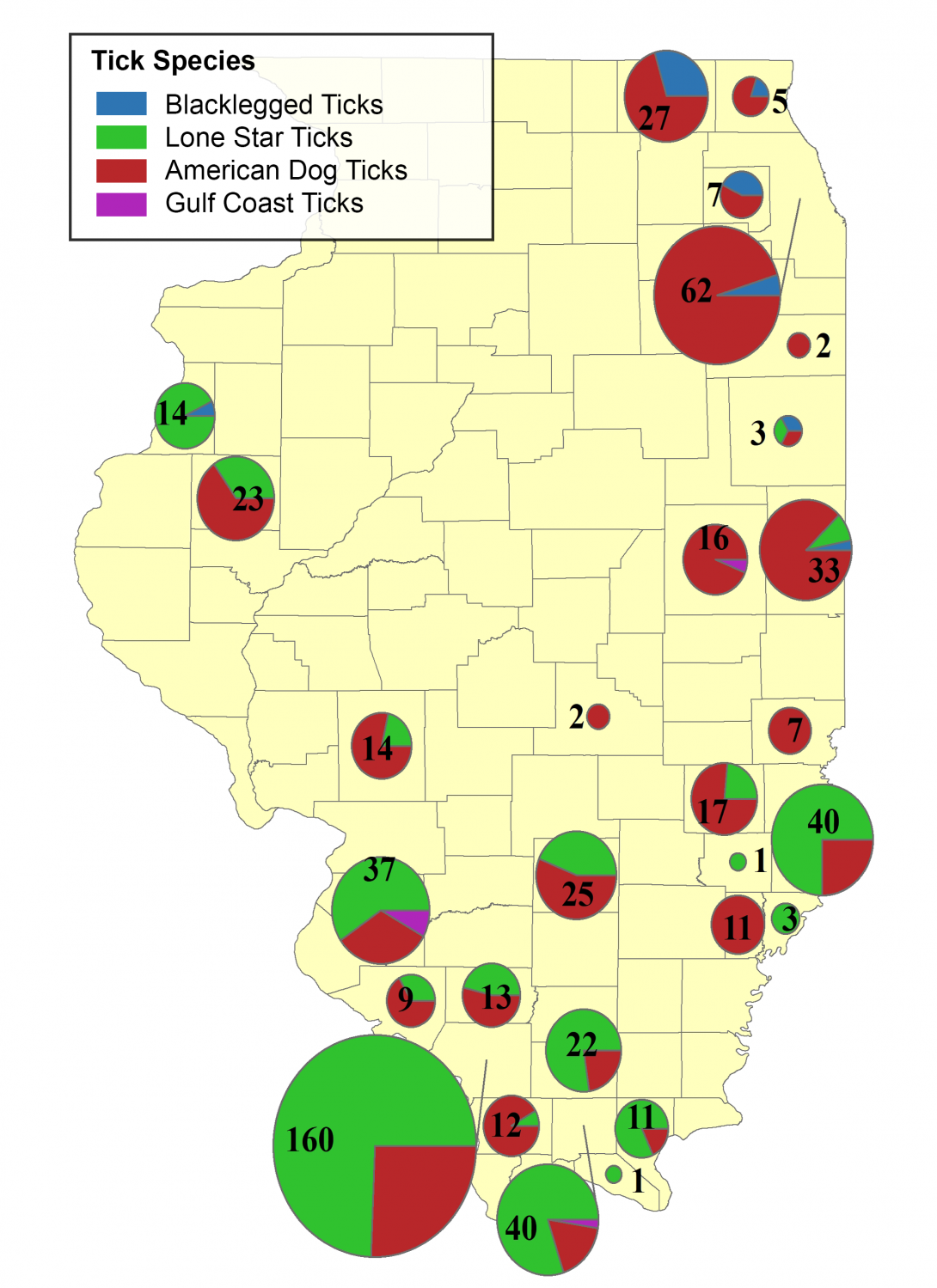Vector-borne Illness
About fifteen years ago, West Nile virus disease arrived in Illinois. Lyme disease arrived here a few years earlier. West Nile Virus is spread by a mosquito and Lyme disease is spread by a tick. Different types of mosquitoes spread different types of diseases and different types of ticks spread different types of diseases. Ticks and mosquitos can live only in areas that have the right temperature and the right amount of water – in other words, they can only cause disease in people if the climate is right for them. With warming temperatures, the “disease vectors” (the mosquitos and ticks) will be able to live in places that used to be too cold for them. The season of when ticks and mosquitoes can spread diseases is also changing. Fall is longer, winter is warmer, and spring is earlier so the season when ticks and mosquitoes are biting is longer. For example, Kendall County Health Department collected 30 ticks in February 2018. February was never considered a month when ticks and mosquitoes are present. Currently, the diseases of concern in Illinois are listed below with additional information about them.
Lyme Disease Cases Spread Across the Country Heading link

This map shows how the number of Lyme disease cases in the United States has increased from 2001 to 2018. Each blue dot represents one case – or a person who had Lyme disease. In 2001 there were only a few cases in northeast Illinois. By 2018, the northeast corner is almost all blue and there are several cases scattered throughout the State.
Diseases per Insect Carrier Heading link
| Disease | Insect carrier | Insect species that can carry the disease |
|---|---|---|
| West Nile Virus | Mosquito | Culex mosquito |
| Lyme Disease | Tick | Black legged tick (or Deer tick) |
| Ehrlichiosis | Tick | Lone start tick |
| Rocky Mountain Spotted Fever | Tick | American dog tick (or Wood tick) |
Disease Links Heading link
For more information on each of these diseases, please visit the corresponding CDC page:
The I-Tick Program: A Citizen Science Program in Illinois Heading link

The College of Veterinary Medicine at the University of Illinois started a new program called I-Tick. I-TICK, (Illinois Tick Inventory Collaboration networK), is a surveillance program to gather information about ticks of public health concern in Illinois. The purpose is to develop a network of volunteers to collect data to help determine the risk of tick-borne disease based on where and when a tick species comes in contact with people, pets, and livestock. This helps to better determine the risk of disease. Anyone whose work, leisure, or hobbies take them outdoors in Illinois can participate. The website provides more information on how to participate.
The map to the right shows how many ticks were found and what types of ticks were found in different parts of Illinois in 2018. The number in the circle says how many ticks were found in that area. The different colors in the circle shows the different types of ticks found in that area. The way the circle is divided into pie slices shows how many of the different types of ticks were found in that area. The Gulf Coast tick, represented by the magenta color, is originally from the southern Atlantic Coast and Gulf Coast but they are starting to appear in Illinois.
How to Prevent Getting Tick and Mosquito Diseases Heading link
One way to help slow down diseases spread by mosquitoes is to empty any large container that can hold water in your yard, such as tires, empty potting plants, and buckets. When going hiking, hunting, camping, to forest preserves, or anywhere there might be ticks or mosquitoes, wear long sleeve shirts, pants, hats, and close-toed shoes. Using insect repellents that contain DEET is also recommended.